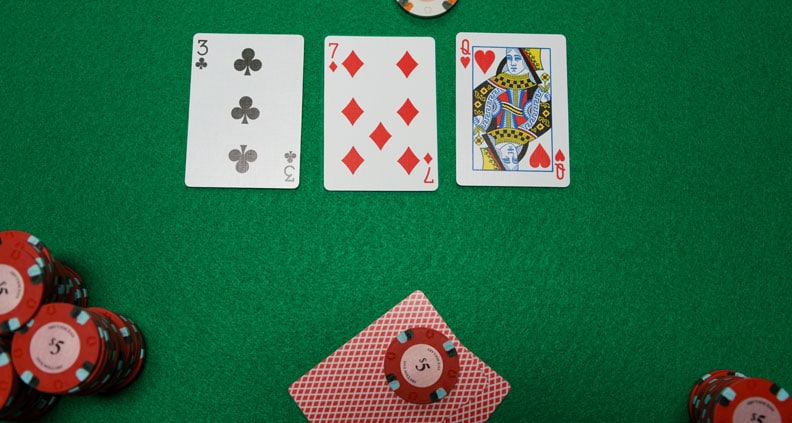Adam “W34Z3L” Jones gives a masterful breakdown of how to properly continuation bet in today’s games with his C-Betting 101 video (PRO members only). Today we’re going to pluck a nugget of wisdom from this video to combat a common c-betting myth that leads a lot of players to leak chips: Always c-bet dry flops.
(If you’re just getting started with c-betting strategy, you might want to first check out SplitSuit’s free introductory video C-Betting Like a Champion before proceeding.)
We’re Not C-Betting in 2006 Anymore
First of all, it should be obvious to most players that dry flops are attractive to c-bet for the simple mathematical reason that your opponents are unlikely to have hit them. The first indication that you might be c-betting dry flops too much is self-evident in the statement we just made. In today’s games, with most players being well-versed in basic poker strategy, almost everyone is aware of the fact that dry flops are hard to hit.

In pre-Black Friday games both live and online, many players could be easily exploited because they were playing fairly fit-or-fold on the flop, and cold-calling pre-flop with too wide a range. Such obvious strategic blunders are far harder to come by these days. In today’s games, players are going to be much more observant of your c-betting frequencies. And when they notice you c-betting too often, they’re going going to get stickier and trickier, floating you or even raising you and rightfully assigning you a wide c-betting range on dry flops.
In his video, Jones is quick to point out that you can turn this myth on its head and observe some players floating way too many dry flops because they assume their opponents are going to c-bet too often. In a game that sees more strategically sound play every day, making this assumption can be costly unless it’s based on a specific read or HUD stat.
The Dry Board/Wet Board Paradox
You might assume that if players are c-betting many dry flops based on the idea that it’s hard for their opponent to hit the flop, on wet, connected boards, c-betting frequencies would be lower for the opposite reason: With the opponent more likely to hit a wet board, one might tend toward fewer c-bets, or at least more straightforward c-bets representing some equity.
Jones does an interesting bit of database analysis to come up with what might be a surprising revelation to many players. In most cases, our opponents’ fold-to-c-bet frequency on a dry flop will generally be very statistically close to their fold-to-c-bet frequency on a wet flop.
That dry and wet boards would get similar folds to c-bets certainly makes common sense. While our opponents could have many more card combinations that connect with a wet flop, they are far less likely to call or raise you with a hand that lacks equity. But for whatever reason, our minds tend to gravitate towards the threat posed to us by a wet board, rather than the opportunity. Conversely, dry boards seem to make players feel safer than they should feel, because in reality, players are going to look you up far more than they did back in the day, when there might have been some merit to c-betting with almost any two cards on a dry flop.
Questions to Ask Before C-Betting a Dry Flop
Now that we’ve established that “Always C-Bet Dry Flops” is largely a myth in today’s games, how do we know when to make the continuation bet, and when not to?
Jones addresses all the details in his PRO video, and as a caveat, we’re not going to get into all the considerations he does in terms of bet sizing, stack sizes, exploiting player tendencies, or playing out of position. In particular, your bet sizing and your opponents’ frequencies are critical to c-betting correctly. As with anything in poker, you need to understand how the fundamental concepts fit in context of the specific spot you’re in. That said, there are some general questions you can ask yourself on these dry flops to help you decide whether a c-bet is advised:
Conclusion
We have only scratched the c-betting surface and highly recommend that you watch the entire C-Betting 101 video by signing up for PRO membership. Alternatively the c-betting resources in our CORE program might better fit your current needs. C-bet sizing in particular is a nuance that requires more study to master. You’ll be deploying half-pot bets, over-bets, and everything in between based on a number of variables. Sizing your c-bet the same in every situation is a whole big leak unto itself, so we encourage you to do your research on sizing.
We hope that if you came into this article c-betting most dry flops automatically, you now see the faults in this approach. Yes, the games are undoubtedly getting harder as most players are now aware of balanced c-bet strategies. But by asking yourself the right questions, having the right information awareness at the table, and planning ahead to showdown, your dry flop c-bets will stop leaking and start profiting.

